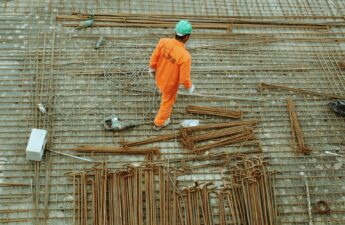Ensuring accessibility in homes is a fundamental aspect of creating inclusive living spaces for all individuals, regardless of their physical abilities. To learn more, we’ll explore the process from assessing accessibility needs to implementing modifications, with a focus on the importance of compliance with legal requirements and the benefits of accessible homes.
Planning and Design
The principles of universal design should guide contractors when planning accessibility modifications. These principles emphasize flexibility, simplicity, and equitable use, ensuring that homes are inclusive for everyone. Contractors must customize solutions based on the unique needs of each homeowner, whether it involves installing ramps and lifts for mobility-impaired individuals, sensory adaptations for those with visual or hearing impairments, or cognitive aids for individuals with memory or cognitive challenges.
Structural Modifications
Contractors need to make structural changes to homes to enhance accessibility effectively. This may involve widening doorways and hallways, installing grab bars and handrails, adjusting countertop heights and kitchen layouts, creating accessible bathrooms, or retrofitting staircases with ramps or chairlifts. These modifications require precise planning and execution to ensure that they meet both legal requirements and the homeowners’ needs.
Technology Integration
Technology plays a significant role in enhancing accessibility. Contractors can incorporate smart home technology, such as voice-activated controls and home automation systems, to make daily tasks more manageable for individuals with disabilities. Additionally, contractors should recommend appropriate assistive technologies, such as hearing aids and visual aids, to further enhance accessibility.
Material Selection and Aesthetics
Contractors should carefully select materials that not only meet accessibility requirements but also contribute to the aesthetics of the home. Flooring choices should provide non-slip surfaces, and color and contrast should be utilized to offer visual cues. It’s essential to choose materials that are not only visually appealing but also easy to maintain, ensuring long-lasting accessibility solutions.
Compliance and Certification
To ensure the success of accessibility projects, contractors must adhere to ADA standards and obtain the necessary permits and approvals. This compliance not only ensures legal conformity but also demonstrates the commitment to creating accessible living spaces. Providing homeowners with accessibility certificates further assures them of the quality and compliance of the work performed.
Budgeting and Financing
Contractors should be adept at estimating the costs associated with accessibility modifications and identifying potential funding sources. Government grants and subsidies, as well as home improvement loans, can provide financial support for homeowners. Developing a realistic budget and timeline is crucial to the successful completion of accessibility projects.
Construction and Implementation
The construction and implementation phase requires the expertise of skilled contractors with experience in accessibility projects. Efficient project management, coordination with subcontractors as needed, and a strong focus on quality control and safety measures are essential aspects of this phase.
Testing and User Training
After completing modifications, contractors should ensure that all features are functional and conduct user training for homeowners. This step is vital in making homeowners feel confident in using the accessibility features provided. It also allows for any necessary adjustments based on user feedback.
Conclusion
Contractors hold a pivotal role in making homes more accessible for individuals with disabilities. Prioritizing accessibility not only benefits individuals but also fosters more inclusive communities. Embracing accessibility as a core value in their work, contractors contribute to a more accessible and equitable world.



